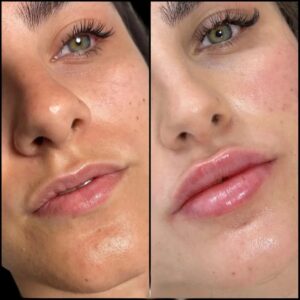
Creating an eye-catching magazine cover is crucial to grabbing the attention of potential readers. It’s the first thing people notice, and it can make or break whether they pick up the magazine. A well-designed cover tells a story, reflects the content, and sets the tone for the publication inside.
Here’s a 10-step guide to help you create a visually appealing and compelling magazine cover.
1. Understand Your Audience
The first step in creating an eye-catching magazine cover is understanding your target audience. Who are your readers? What do they care about? Whether your magazine focuses on fashion, health, politics, or entertainment, your cover should speak directly to the interests of your audience. Knowing this will guide the design, imagery, and typography choices, ensuring that the cover resonates with your readers.
2. Choose a Strong Focal Image
The image on the cover is the first thing that draws attention. A striking, high-quality image should dominate the cover and reflect the main theme of the magazine. Whether it’s a celebrity portrait, a landscape, or an abstract design, ensure that the image is visually captivating and tells a story. A magazine cover designer often works with photographers or graphic designers to choose the perfect image that aligns with the magazine’s style.
3. Make Sure the Title Stands Out
The title of your magazine is just as important as the image. It needs to be bold and easily readable, even from a distance. The font should complement the design but also maintain readability. Many magazine cover designers prefer strong, clean fonts for titles that are both modern and timeless. The title should take up a significant portion of the cover, but not overpower the image. Balance is key.
4. Incorporate Bold, Engaging Headlines
Headlines and sub-headlines provide a snapshot of what’s inside the magazine. These should be short, attention-grabbing, and compelling. Use strong action verbs or intriguing statements that encourage the reader to dive into the content. If your magazine writing services include feature articles, ensure that the headline reflects the essence of the article and sparks curiosity.
5. Consider the Color Scheme
Color plays a huge role in setting the tone of the magazine. Bright, bold colors might be appropriate for a fashion or lifestyle magazine, while more subdued tones could work for a business or political publication. Ensure that the colors on the cover are cohesive and visually appealing. A magazine cover designer often uses contrasting colors to create focus and hierarchy, making sure the most important elements pop out.
6. Use Engaging Typography
Typography isn’t just about readability; it’s about creating a personality for your magazine. The font choices should align with the magazine’s brand and message. For instance, a classic serif font can convey elegance, while a modern sans-serif font might be more suitable for a tech or design magazine. A skilled magazine cover designer will play with font sizes, weights, and alignments to create a visually dynamic and readable cover.
7. Leave Room for Consistency
If your magazine is part of a series, it’s essential to maintain some consistency across issues. While each cover should be unique, elements like the placement of the title, logo, and recurring color schemes or fonts should remain similar to create a recognizable brand. This makes it easier for your readers to spot the magazine on the shelf or online.
8. Balance the Layout
A cluttered magazine cover can confuse the viewer and detract from the overall impact. A clean, balanced layout will guide the reader’s eye across the cover in a natural flow. The image, title, and headlines should have a harmonious relationship with one another. Too much text can overwhelm the design, so make sure there’s a good balance between visuals and text.
9. Ensure High-Quality Design and Printing
No matter how creative your design is, it won’t make a lasting impression if it’s not printed or presented well. Ensure that the images are of high quality and resolution. A magazine cover designer should work with printers to guarantee that the cover’s colors are accurate and the design looks sharp in both print and digital formats.
10. Test and Revise
Once your cover is designed, it’s important to test how it will look on various platforms. If it’s going to be displayed on a newsstand, ensure that it grabs attention from a distance. If it’s a digital magazine, check how it appears in thumbnail size. Gather feedback from your team or test groups and make any necessary revisions. Refining your design based on feedback can make all the difference in how it is received.
Conclusion
Creating an eye-catching magazine cover requires careful planning, creativity, and attention to detail. By understanding your audience, choosing a striking image, and paying attention to typography, color, and layout, you can design a cover that stands out on the shelf and draws in readers. Working with a magazine cover designer ensures that your vision is brought to life most effectively while utilizing professional magazine writing services helps produce compelling content that enhances the overall appeal of your publication. With these 10 steps, your magazine will have the potential to make a lasting impact.





